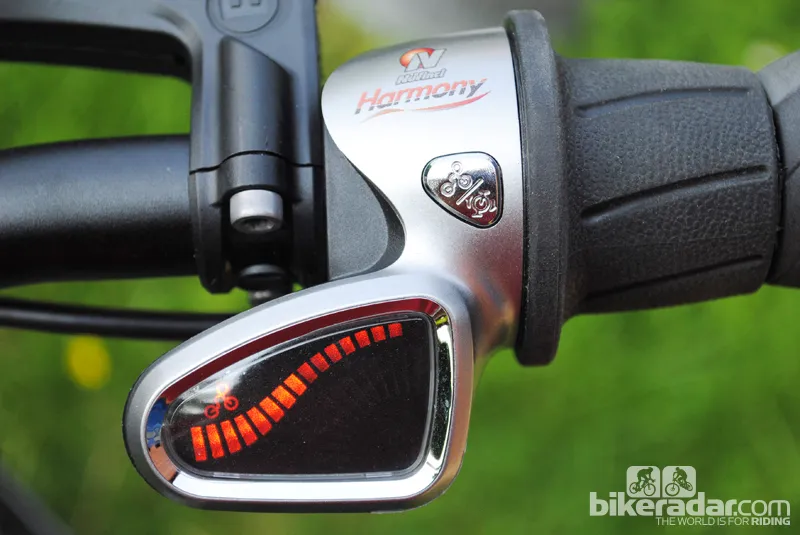The NuVinci Harmony automatic shifting system isn't available as a standalone product, but BikeRadar have been trying it out on the Kalkhoff Sahel i360 Harmony electric bike (£2,195).
Bikes that shift gear automatically have often featured in 'Is this the future of cycling?' articles, and have even made it into bike shops, albeit in relatively small numbers. As far back as 1974, US firm Browning began work on a triple chainring that shifted automatically. This was briefly put into production by Suntour. And the Shimano Cyber Nexus system has been around a while, with its fully automatic, dynamo-powered gear changing, adjustable suspension and lighting.
US company Fallbrook have taken the technology one step further with the NuVinci Harmony, combining auto-shifting with their continuously variable transmission (CVT) – a stepless hub that always stays in gear.
They have allied this novel hub gear with a small servo motor that replaces the cable on the manual version, and gone one step further by adding a microchip that enables you to set your preferred cadence and changes gear automatically to keep it constant.
So, how does the Harmony system actually ride? To get used to the feel of it, we opted for the manual shifting option before switching to the fully automatic version. You don't so much change gear as twist the grip shifter to the precise point at which pedalling feels comfortable. We tried to fool it by twisting quickly from the lowest to the highest gear while, riding but it worked pretty faultlessly.
Shifting from high to low gears while stationary – a common everyday situation after you've had to stop quickly, for example – was a bit less satisfactory, the system taking a second or two to respond and change. Still, perfectly usable if a little disappointing.

The light display shows gear ratio setting in manual mode
Switching to fully automatic means simply twisting the grip to a preset pedal cadence – the computer display on our test bike indicated anything from about 35rpm to 90rpm was achievable at a more or less steady rate, whatever the riding conditions.
As hills and headwinds and stops and starts come and go, no gear shifts are needed if you want to stay at a steady cadence. The computer chip just controls the sensor motor that slides through the gears seamlessly to keep you pedalling at a constant rate.
In practice, we tended to use a higher cadence for steeper hill climbing and a lower one for flatter riding; this meant a fairly infrequent twist of the grip shifters. The overall effect is miraculous, leaving you free to forget about gears and concentrate on enjoying the ride.
Finally, what of the hub gears themselves? Switching off the motor and pedalling gave a better feel for how the CVT system performed. As you twist from low to high gearing, the drive ratio is changed within the hub by metal balls transferring the drive between two discs, the gear in effect changed by the balls spinning to different positions on their own axles.
While the gear changing was beautifully smooth and quick, it did become disproportionately harder to pedal the more effort you put in. This was perhaps because the drive depends on a traction fluid sitting between discs and balls that effectively becomes thicker the more pressure it's put under. We found ourselves countering this by adopting a gentle riding style and a higher gear/cadence setting on hills.
While this might be a problem if you're looking for ultimate transmission efficiency on a sports bike, for leisure riders on electric bikes it's not really an issue; with motor power and higher gears available the effect is largely avoidable. Rumour has it that NuVinci are working on a version for non-electric bikes, power being provided either by on-board battery or dynamo power.

The rear hub and servo motor. The cable disconnects easily, for wheel removal
As an exercise in trying to crack the longstanding and complex engineering puzzle of usable automatic bike transmissions, the Harmony is a supreme achievement. But is it really needed? Is shifting really such a problem for beginners or a hassle for the more experienced?
For leisure riding, this easy-to-use, no maintenance (it's sealed for life) system might find many delighted customers. And if you're still undecided, NuVinci and Kalkhoff have introduced the Impulse Ergo Cardio, a bike designed to keep heart rate constant, rather than cadence.

